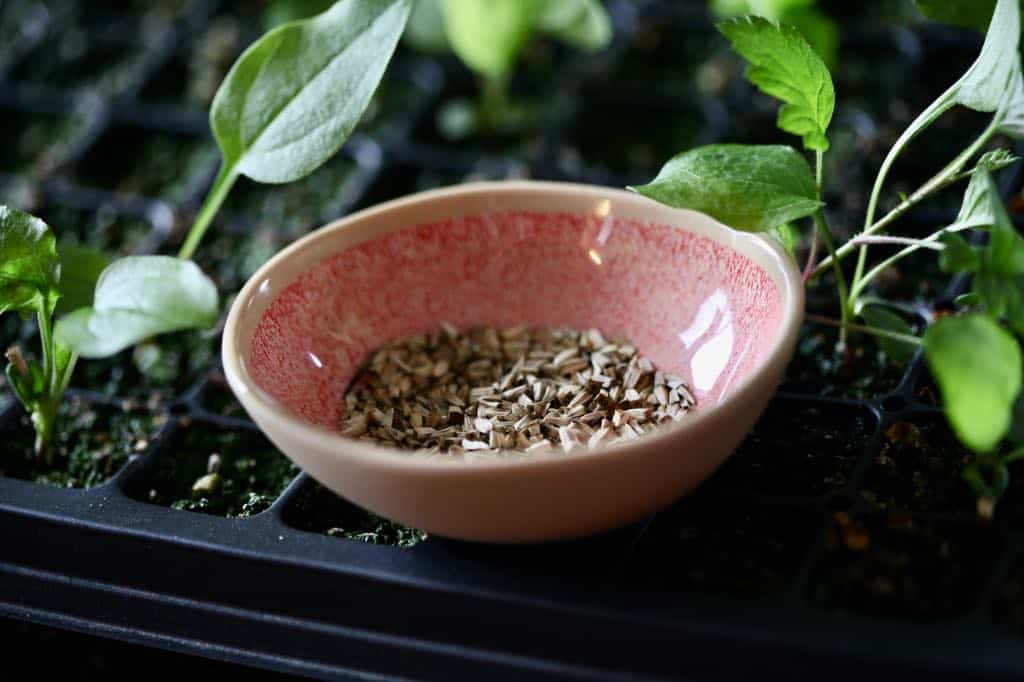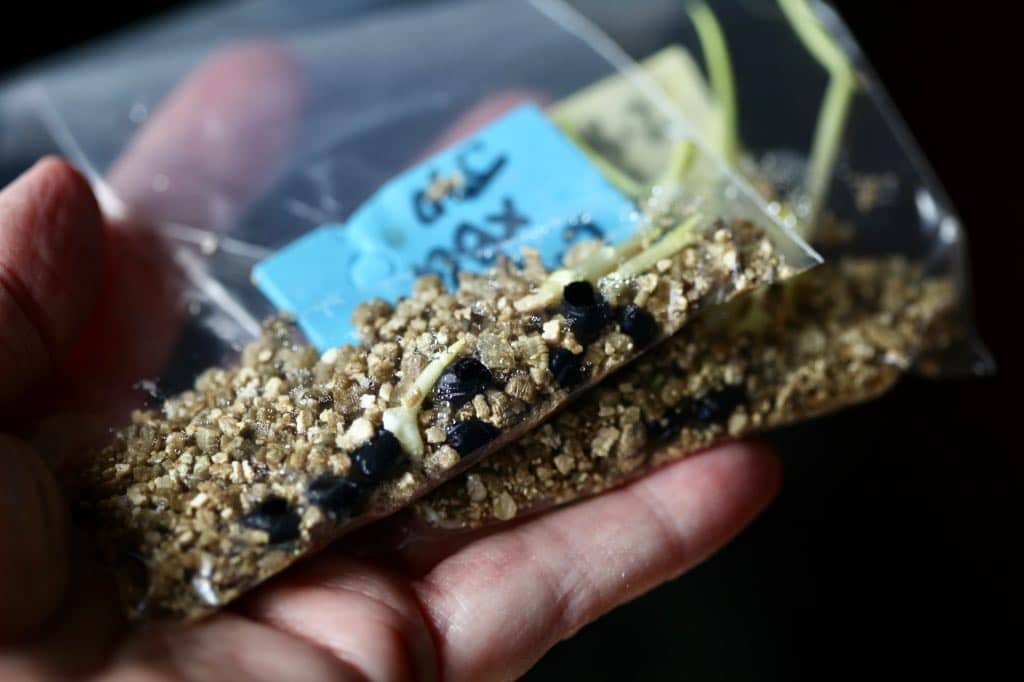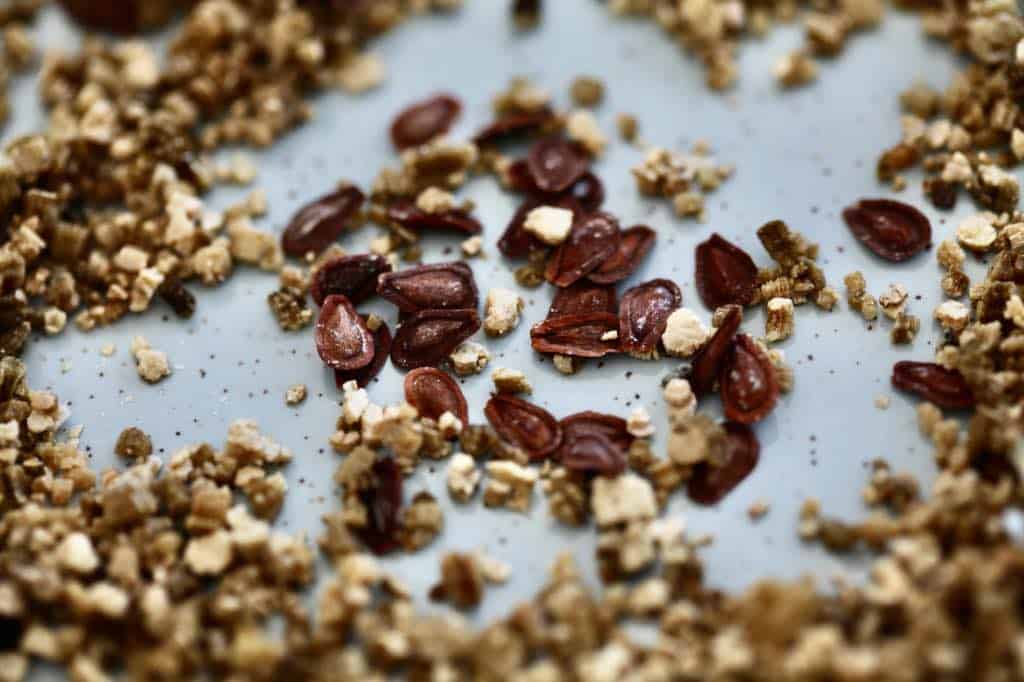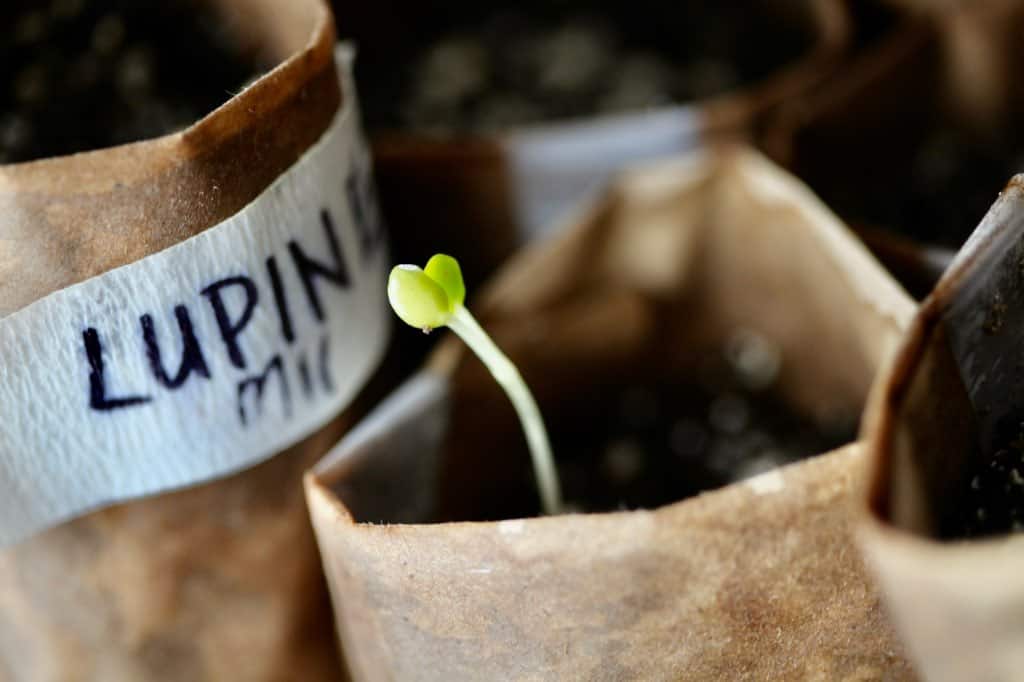Seed stratification is a preparatory process, which some seeds must experience before germination. Many species of plants, especially those native to temperate or cooler climates, produce seeds with dormancy mechanisms which prevent germination unless the conditions are right. Learn how to stratify seeds, to achieve successful germination of those dormant and hard to sprout seeds.

Have you ever tried to grow perennial or tree seeds and they just wouldn’t sprout? Even with some preparation such as a cold chill in the fridge, the seeds might not germinate.
Most likely your seeds were dormant, and needed a bit of help breaking that dormancy to grow.
These built-in dormancy mechanisms are protective factors for the seeds. In nature, they help to ensure that the seeds will not germinate during the cold winter, until the risk of frost has passed, and conditions are favorable for growing. This includes sufficient warmth in the environment, and moisture to sustain the new and growing seedling.
For gardeners attempting to plant and grow these seeds, it’s important to have an understanding of seed dormancy. It’s crucial to be able to apply stratification techniques, to help to break the dormancy, and encourage successful germination.

To Stratify Seeds:
To successfully stratify seeds, the seeds are subjected to specific temperature and moisture levels, for a certain time period. Most often this is achieved through cold stratification by chilling the seeds for a set period of time, either naturally or artificially. Warm stratification may also be required prior to exposure to cold. This involves exposing the seeds to a stable warm temperature before cold stratification.
Each species of seed may require a different stratification protocol. Therefore it’s important to research the needs of the specific seeds that you are planting, and know just how long, as well as how, to stratify each species.
Following stratification, the seeds are generally planted, and provided with the right care to ensure that they sprout, and develop into healthy seedlings. Gardeners should be aware of optimal planting times and methods for planting the stratified seeds, and plan accordingly, considering their growing zones.
Gardeners can also use natural stratification by either direct sowing the seeds into the garden in fall, or winter sowing, exposing the seeds to the cold elements throughout the winter.

To learn more about seed dormancy, stratification, and specific stratification techniques, follow along for more detailed descriptions.
Understanding Seed Dormancy
Seed dormancy is a natural protective mechanism within many types of seed. This natural phenomenon ensures that seeds do not sprout before they have reached an environment in which they will survive.
This built-in protective mechanism helps to prevent the seeds from geminating at the wrong time.
However it can also prevent the seeds from germinating at all, even when conditions are favorable, such as in the case of gardeners planting their seeds.
Types Of Seed Dormancy
There are a number of seed dormancy types into which seeds can be classified (source). Some seeds will fall into one category, while others may have a combination of different dormancy types.
Here are some of the most common dormancy types:
Physiological Dormancy
- This is the most common type of seed dormancy. It involves internal factors which prevent germination. These seeds require triggers, such as cold and warm stratification, light, or scarification to break dormancy.
Physical Dormancy
- Physical dormancy involves a hard impermeable seed coat. These seeds often require extra effort to break down the hard outer coat, such as scarification, to allow moisture to penetrate, and stimulate germination.
Combinational Dormancy
- These seeds have a combination of both the physiological as well as physical dormancy. They have both a hard seed coat, and as well will need other physiological triggers to break dormancy.
Chemical Dormancy
- Some seeds have inhibitory chemicals which prevent germination. These chemicals will need to be leached away by rainwater or some other means, for successful germination.
Morphological Dormancy
- This type of dormancy involves the seed embryo, which is immature or underdeveloped at the time of shedding. These seeds will require a period of time to grow and develop, before germinating.
Secondary Dormancy
- This dormancy type is caused by the lack of certain external environmental factors which are necessary for germination, such as temperature, moisture, or light. This dormancy is a reversible state, and can be broken when conditions become favorable for the seed.

The Importance Of Breaking Seed Dormancy
As a gardener, and in my case a flower grower of many different types of flowering plants, knowing how to break seed dormancy is essential for starting plants from seed.
Breaking seed dormancy is important for the successful propagation of certain plant types, such as hardy annuals and perennials. Germination can only occur once the dormancy is broken.
Breaking dormancy can occur through natural processes, such as natural stratification when the seeds are exposed to cold conditions, such as freezes and thaws outside in the environment. Dormancy can also be broken using artificial stratification techniques, which mimic the outdoor environment.
- Natural Methods: Natural methods include the weathering and microbial action that gradually degrade and break down the tough outer seed coat.
- Artificial Methods: Artificial methods include stratification in the fridge, as well as scarification, and chemical treatment to break down the seed coat.

Understanding Seed Stratification
Purpose Of Stratification
- Breaks Seed Dormancy: Many seeds have built-in dormancy mechanisms that prevent them from germinating until conditions are ideal. Stratification is a process which helps to overcome these mechanisms, and helps to break seed dormancy.
- Ensures Seasonal Timing: Stratification which occurs naturally in cold weather and winter conditions is a natural process which takes time, and along with seed dormancy ensures that the seeds do not germinate until the appropriate season.

The Types Of Stratification
Stratification is a process which can occur naturally in the outdoor environment, or artificially to simulate conditions in the outdoor environment.
Gardeners and plant breeders often stratify seeds to improve germination rates and ensure healthy plant growth.
Understanding and applying the correct stratification method for specific plant species is very important, for successful propagation of those plants.
There are two primary types of stratification: cold stratification, and warm stratification.
Here I will be discussing the specifics of artificial stratification, which simulates the natural conditions of the outdoor environment that contribute to stratification:
1. Cold Stratification
- Artificial cold stratification mimics the cold moist conditions that seeds would naturally experience during the winter.
- This process is used to break the dormancy of seeds that require exposure to cold temperatures for a certain period, before they will germinate.
- This is accomplished by placing the seeds in a moist medium, and then placing them in the fridge for a specified duration, which can range from a few weeks to several months or more, depending on the species.

2. Warm Stratification
- Warm stratification simulates the warm conditions that some seeds require before they are exposed to the cold period required for germination.
- This involves keeping the seeds in a warm moist environment for a certain period, then followed by a period of cold.
- This two-part process is helpful for certain seeds that have come from climates with hot summers and cold winters.
- Some seeds may require both a warm and then cold stratification period.
How To Stratify Seeds: A Step-by-Step Guide
The stratification process helps to break seed dormancy and promotes germination, by exposing the seeds to the conditions that they must experience before germination can occur. The process to stratify seeds will vary, depending on the type of seed, and the type of dormancy that the seeds have.
Steps For Cold Stratification
To cold stratify seeds:
1. Mix seeds with a slightly moist medium, such as vermiculite, sand, or peat moss. You can also use a damp paper towel or coffee filter.
2. Place the mixture in a sealed plastic bag or plastic container.
3. Refrigerate at temperatures between 1-5°C (34-41°F).
4. Duration: Typically ranges from several weeks to several months or more, depending on the species.

Steps For Warm Stratification
1. Maintain seeds at warm temperatures, around 20-30°C (68-86°F).
2. Keep in a medium inside a container or baggie, which is moist but not waterlogged.
3. Duration: Typically ranges from several days to several months, depending on the species.
Monitoring The Seeds
- Regular checks for mould formation, dryness, or sprouting are important during the stratification period.
- If mould appears, clean the seeds and replace the medium.
- If dryness occurs replace the moisture, allowing for light moisture and avoiding excess water.
- Any sprouted seeds should be planted, taking care not to injure the emerging root.


Planting Stratified Seeds
Once the stratification period is complete, the seeds can be removed from the fridge and sown into soil.
Sow seeds according to the needs of the specific seed type. This stage requires attention to soil conditions and sowing techniques, to optimize germination rates.
Seeds should ideally be planted in conditions that mimic spring, such as warmer temperatures and increased light.
I often place the planted seeds on a heat mat until germination occurs. Some seeds however require cooler temperatures for optimal germination, and some require complete darkness.
Therefore it’s important to know your individual seed types and their specific needs, for best germination post stratification.


Frequently Asked Questions
Which Flower Seeds Require Stratification To Germinate Effectively?
Many perennial and hardy annual seeds have a tough seed coat, and require stratification for successful germination. Provision of a moist cold treatment is an easy process, which usually results in better germination of the seeds.
Examples of seeds which require stratification include perennial seeds such as daylilies, lupine, coneflowers, milkweed, and wisteria, and hardy annuals such as Bupleurum, Bells Of Ireland, and Larkspur, just to name a few.
What Is The Ideal Temperature Range For Cold Stratification?
The usual fridge temperature, at about 4 °C (40 °F) or lower, is ideal for stratification.
Some seeds can also be placed in the freezer, however be aware that some seeds will not tolerate freezing (such as daylily seeds), and can be destroyed if frozen. Be cautious about placing any seeds into the freezer, unless it is known that this is the best treatment for that specific seed type.
Is It Necessary To Soak Seeds Prior To Cold Stratification?
Soaking some seed types can help to soften the seed coat, however it is generally not necessary. The moist medium will have the same effect on the seed coat over time.
How Can I Accelerate The Stratification Process For Seeds?
Scarification of seed, which is the process of nicking the seed coat with a sharp object, can sometimes speed up the process of breaking seed dormancy, in combination with stratification. This allows moisture to enter the seed, enabling further destruction of the seed coat and easier germination efforts.
Sometimes though, you just need to be patient and allow the seeds to take their time.
A few years back I was slightly impatient with my Bells Of Ireland seeds. In fact I thought the seeds were no longer viable because they weren’t germinating, and tossed the soil back into a container, outside in the cold.
Later, when I reused that soil, I had little Bells Of Ireland seedlings popping up everywhere. Trust the process, it works. Give the seeds time to break their dormancy.

Conclusion
Stratifying seeds is an invaluable technique to learn for any gardener who plans to propagate plants from seed. Moist stratification is key, whether you are chilling or warming the seeds.
Whether you are using cold stratification for hardy perennials, or warm stratification for certain trees and shrubs, patience and attention to detail are also key. Trust in the process, and allow your seeds the time they need to awaken, germinate, and grow.
Remember that each species has it’s own specific requirements, so make sure to do your research, and tailor your approach to the needs of your seeds.

Other Posts You May Like:
Pin It For Later!





Leave a Reply